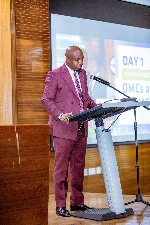Public Relations as a form of manipulation. Fact or myth?
 Emmanuella Yamoah - communications and media relation consultant
Emmanuella Yamoah - communications and media relation consultant
“The history of public relations is a history of a battle for what is reality and how people will see and understand reality” – Stuart Ewen.
The field of Public Relations (PR) has evolved into an intriguing area, particularly in modern times. Many people have been questioning the relationship between Public Relations and Psychology, with some describing the field as one that uses manipulation.
The Expert’s Lens
Experts have described Public Relations as a “strategic communication process that builds mutually beneficial relationships between organizations and their audience”. Strategic communication can be defined as communicating with a purpose whiles showcasing the value of the process in order to achieve a goal.
This means that, the aim of PR professionals is to relay information on behalf of an organization/personality in a manner that is persuasive, effective and leads to an action or response from its intended audience. To achieve this said action, it is very essential for PR Professionals to identify and understand their audiences for insight on how they form their attitude, behaviour as well as opinions towards a brand or product.
The Writer’s Lens
I personally see PR as an analysis of personal relationships, hence, the perfect explanation of the relationship between PR and Psychology. In understanding and developing relationships with their audience, PR professionals employ social psychology which focuses on “how people’s thoughts, feelings, beliefs, intentions, and goals are constructed within a social context by actual or imagined interactions with others”. This field of psychology helps practitioners understand their audience and tailor information/messages accordingly.
The PR Approach
Before drawing up any communication strategy for a brand and or product, PR professionals conduct extensive research into the brand and its audience. The findings guide the direction of the messages and strategies. Some of these factors included the following points.
1. The goal of the communication: This is a specific and measurable objective that the organization seeks to achieve through communication activities. The desired outcome that the communicator aims to accomplish through their communication efforts.
2. Identify and understand the target audience: This includes mapping out the intended receivers of the communication, their demographics, social perceptions and mindset, negative and positive bias, how they think, their attitude, their interests, the hook for catching their attention, how they process messages as well as the ability to remember and hold on to these messages. Knowing how people build attitude to situations is the first step in knowing how to position your message to them. At the end of the day, the secret is communicating to each individual rather than a generalized public. Messages are digested as a personal experience and should therefore be worked on as such. In personalizing messages, PR professionals adopt the hierarchy of effects theory. The theory is established on cognitive factors, which is how people process information given to them. This propels people to want to know more and make a connection with a brand. Affective focuses on how people develop or form feelings towards a brand and the appeal it has. The last, conative, is the desired action, getting people to react or act on the information received. Simply put, it is what you think about it, how you feel about it and what you are doing about it.
I believe this is one of the reasons why TikTok is very popular among young people. The app focuses on the people factor and how to appeal to them. The features of the app invites people to willingly participate and share, allowing them to feel involved, showoff their skills and feel special.
3. Communicate the value of the message: In communication, it is very important to think about the value of your message from the perspective of your target audience such that you are able to position the message in a manner that resonates with their own interest and is easily accepted. For example, assuming I want to secure a partnership with a software company and a bank, my approach to each company will be targeted to what each company does and how they seek to benefit from the partnership. This means that I will be communicating the uniqueness of the partnership to each company. Each situation is different, so it's helpful to be able to apply different approaches and techniques to deal with every given scenario.
Ultimately, the key to creating a hook is to be creative, strategic, and audience-focused which ensures that your messages are remembered.
All these points seek to prove that a good PR plan is guided by theories and application of psychology. People are influenced by a number of different factors before they take action on something. Depth of information and objective facts plays a role here, however, it is often outweighed by emotional or psychological factors.
Final Thoughts
In conclusion, the relationship between Public Relations and Psychology cannot be denied as they are intricately intertwined. Public Relations professionals have come to realize the importance of psychology in their field as it enables them to understand their audience, craft effective messages, and achieve their desired outcome. It is important to note that PR professionals do not use manipulation, but rather apply psychological theories to build mutually beneficial relationships with their audience. Therefore, the use of psychology in Public Relations is a vital aspect that should be embraced and utilized to create impactful and effective communication strategies.
The author is passionate about 360 communications and media relations. Currently work as a communications and media relation consultant for Strategic Communications Africa Limited.
Source: Emmanuella Yamoah
Trending Features

A vindicated Zoomlion?
03:12
Oti Region: Ghana’s emerging growth frontier
20:17
Russia’s stance: “For freedom of nations”
10:02
NPA’s regulatory drive strengthens under Edudzi Kudzo Tameklo in eleven months
09:23
Amid record funding, critical gaps loom over Ghana’s 2026 health budget
15:21
Is the Special Prosecutor independent?
00:57
Africa’s Bold Stand: Mali’s victory and Ghana’s resolve should be the blueprint
13:50




